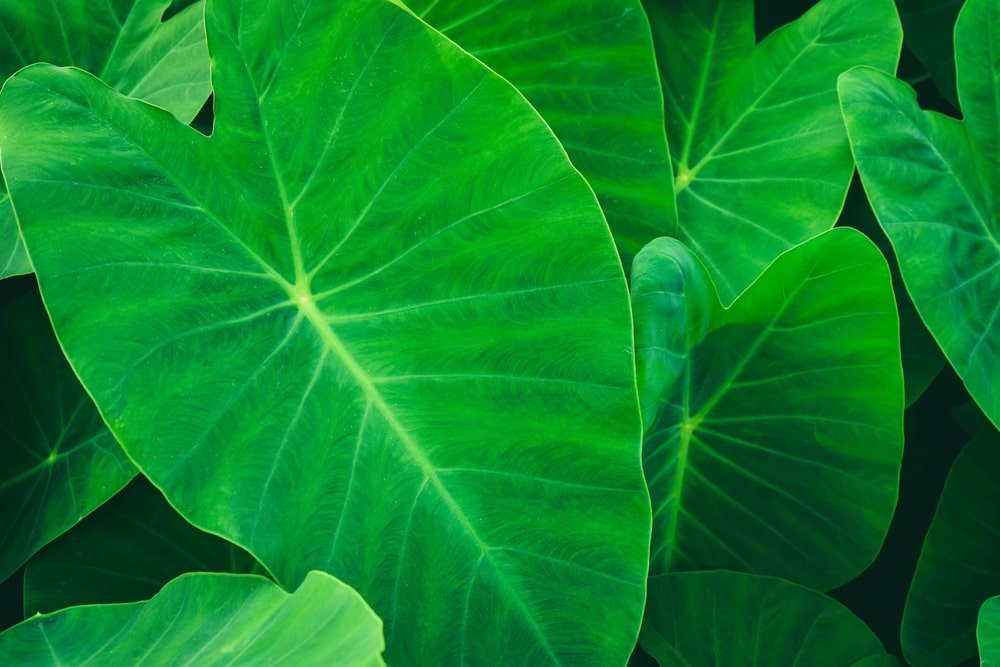Elephant ears have been cultivated for more than 10,000 years as a food crop—making it one of the oldest cultivated plants in the world. The botanical name is Colocasia esculenta—esculenta comes from the Latin word for edible. It’s toxic when raw due to calcium oxalate crystals, but edible when cooked.
On the other hand, I’m less interested in eating mine and more interested in the way these provide lush tropical interest in the shady parts of my yard.
Caring for Elephant Ears
Elephant ears are related to caladiums and both will thrive in shade to part-shade. Elephant ears need moist conditions, while caladiums can take it a bit drier. They are both easy to grow AND not bothered by four-legged pests such as deer, chipmunks, and voles—always a bonus!
Elephant ears are sold in a variety of sizes from small lemon-sized tubers to ones about the size of a bowling ball. The only difference is the size of the finished plant. The bigger the tuber; the bigger the mature plant will be.
Some varieties of Alocasia are also called Elephant Ears. They are related to Colocasia and caladium and need the same conditions. Their leaves grow more upright, rather than arching over, hence the nickname Upright Elephant Ear. All of these will do quite well in containers.
Plant your elephant ear about six inches deep, and water well. Remember they prefer more shade to sun but will tolerate some sun if kept well-watered.
While caladiums are only winter-hardy to northern Florida, and Alocasias are hardy to zone 8 (coastal southern Virginia); Colocasias have wintered over here in zone 7 (with protection). I dig mine up, however, just to be safe.
I’m not going to eat my Colocasias, but in case you decide to nibble yours—cook it first! Then know that it is a great source of dietary fiber and a good source of vitamins C, E, B6, and several trace minerals. Let me know how it tastes.

